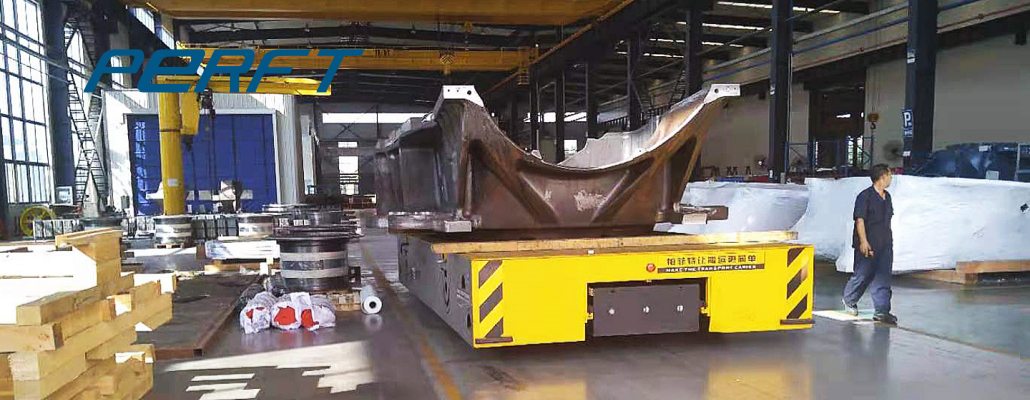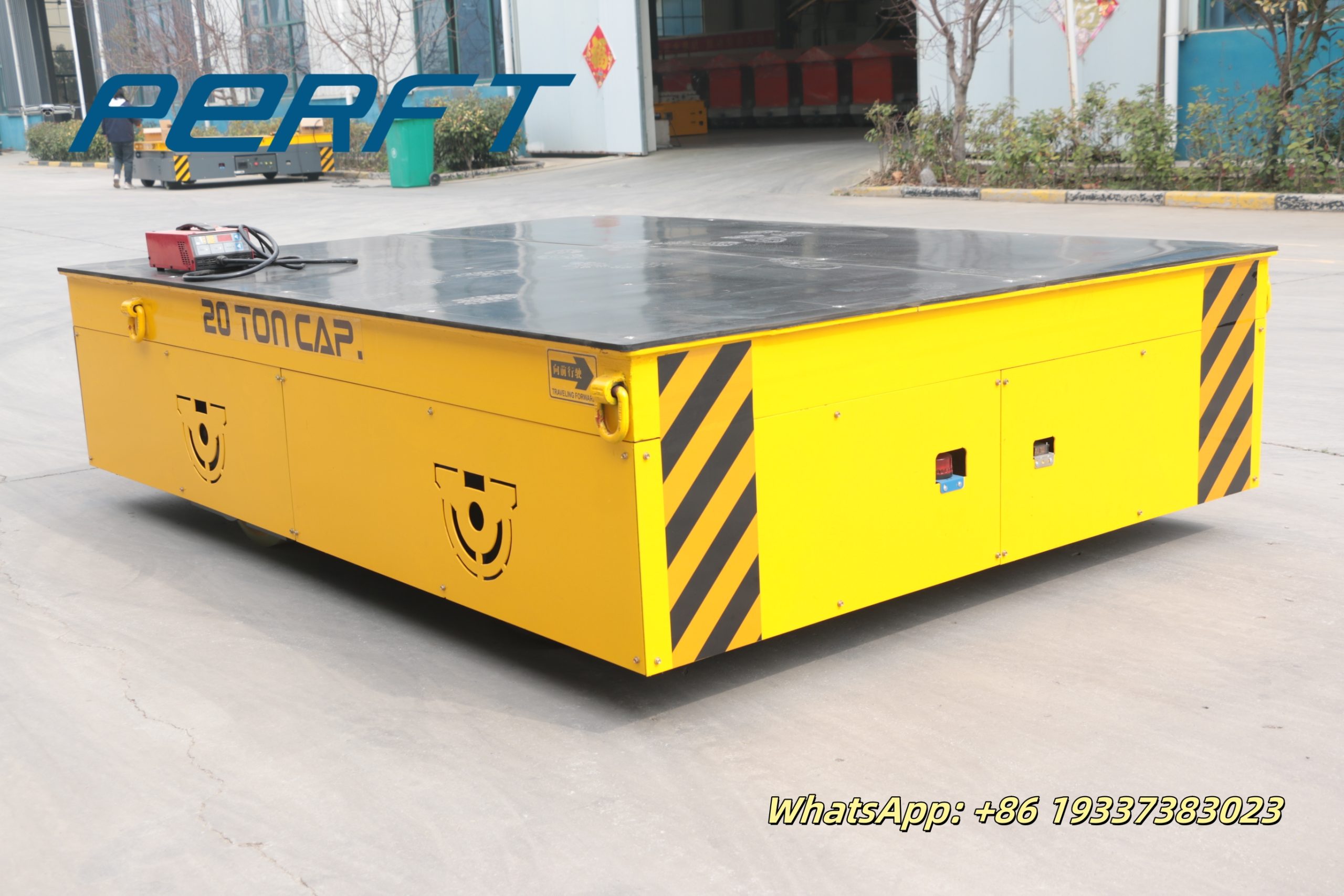In the efficient operation of trackless transfer cart, the motor, as the core power component, directly affects the overall performance of the equipment. However, motor overheating is a common problem that should not be ignored; if not prevented and solved in time, it will not only lead to equipment operating inefficiency, shorten the service life, but may even cause safety accidents, resulting in significant losses.
Heavy Duty Transporter 20 Ton Video
Harm of Electric Transfer Cart Motor Overheating
Motor overheating will have many adverse effects on trackless transfer trolley.
First of all, the high temperature will make the motor winding’s insulation performance decline, accelerate the aging of insulation materials, and shorten the service life of the motor. According to statistics, if the motor temperature rises 10 ℃, the insulation life will be shortened by about half.
Secondly, overheating will lead to expansion of the internal parts of the motor, changes in the fit gap, increasing mechanical wear, affecting the operating accuracy and stability of the motor, which in turn leads to vibration, noise, and other problems when transfer trolley is running. In addition, serious overheating conditions may lead to generator winding short-circuit, burn, and may even cause fire, posing a great threat to the safety of personnel and equipment.

Analysis of Transfer Cart Overheating Causes
- Load: If trackless transfer cart carries heavy loads beyond the rated load for a long time, the motor needs to consume more energy in order to maintain the operation, and the current increases, which generates too much heat. For example, a rated load of 5 tonnes of trackless electric transfer cart, if the long-term carriage of 7 tonnes of goods, the motor is very easy to overheat.
- Heat dissipation problem: The heat generated by the motor needs to be distributed in a timely manner. If the heat dissipation system is not perfect, such as blocked vents, cooling fan failure, or lack of heat accumulation, the temperature will rise rapidly. Especially in a closed, stuffy working environment, the problem will be more serious.
- Abnormal power supply: A stable power supply is the basis for the normal operation of the motor. When the power supply voltage is unstable, too high or too low, the current inside the motor will fluctuate. If the voltage is too low, the motor needs to output more torque, and the current increases; if the voltage is too high, it will be beyond the normal working range of the motor, resulting in overheating.
- Failure of the motor itself: wear and tear of the bearings, short-circuiting of the windings or aging of the insulation inside the motor will increase the friction and uneven distribution of the current when the motor is running, thus triggering overheating. For example, the lack of lubrication and serious wear of bearings after long-term use will cause the motor to run poorly and increase the temperature.

Prevention and Solution
- Reasonable planning of loads: use the trackless electric transfer cart strictly according to its rated load to avoid overloading. At the same time, evenly distribute the goods to prevent local uneven force. An overload warning device can be installed on transfer cart to remind the operator in time once the load is close to or exceeds the rated value.
- Optimise the heat dissipation system: check the vents regularly and clean up debris to ensure smooth ventilation; check the cooling fan and replace it in time if it is damaged, or consider installing a higher power or more number of cooling fans to enhance the heat dissipation effect; for the operation scenarios in high temperature environments, heat sinks can be installed on the surface of the motors to increase the area of heat dissipation, and water cooling and other auxiliary heat dissipation methods can be used.
- Stable power supply: use high-quality regulated power supply to ensure that the voltage is stable within the permissible fluctuation range of the rated voltage of the motor; regularly check the power lines to see if there is any looseness, damage, to avoid poor contact triggered by the unstable voltage; install over-voltage, under-voltage protection devices, when the voltage is abnormal automatically cut off the power supply to protect the motor.
- Regular maintenance of the motor: establish a regular maintenance system, regularly check the bearings, windings and other parts of the motor. Lubricate the bearings and replace them in time when they are seriously worn out; test the insulation resistance of the windings and deal with or replace them in time when the insulation is found to be aging; clean up the dust and oil inside the motor to ensure that the inside of the motor is clean and conducive to heat dissipation.
The problem of overheating of the motor of trackless electric transfer cart will have a serious impact on the operational efficiency, service life and safety performance of the equipment. Through in-depth analysis of the hazards and causes of motor overheating, and taking targeted preventive measures, the risk of motor overheating can be effectively reduced. In practical application, attention should be paid to the maintenance and management of the motor, combined with the working environment and conditions of use, to develop scientific and reasonable prevention and solution strategies to improve the reliability and stability of trackless electric transfer cart.
